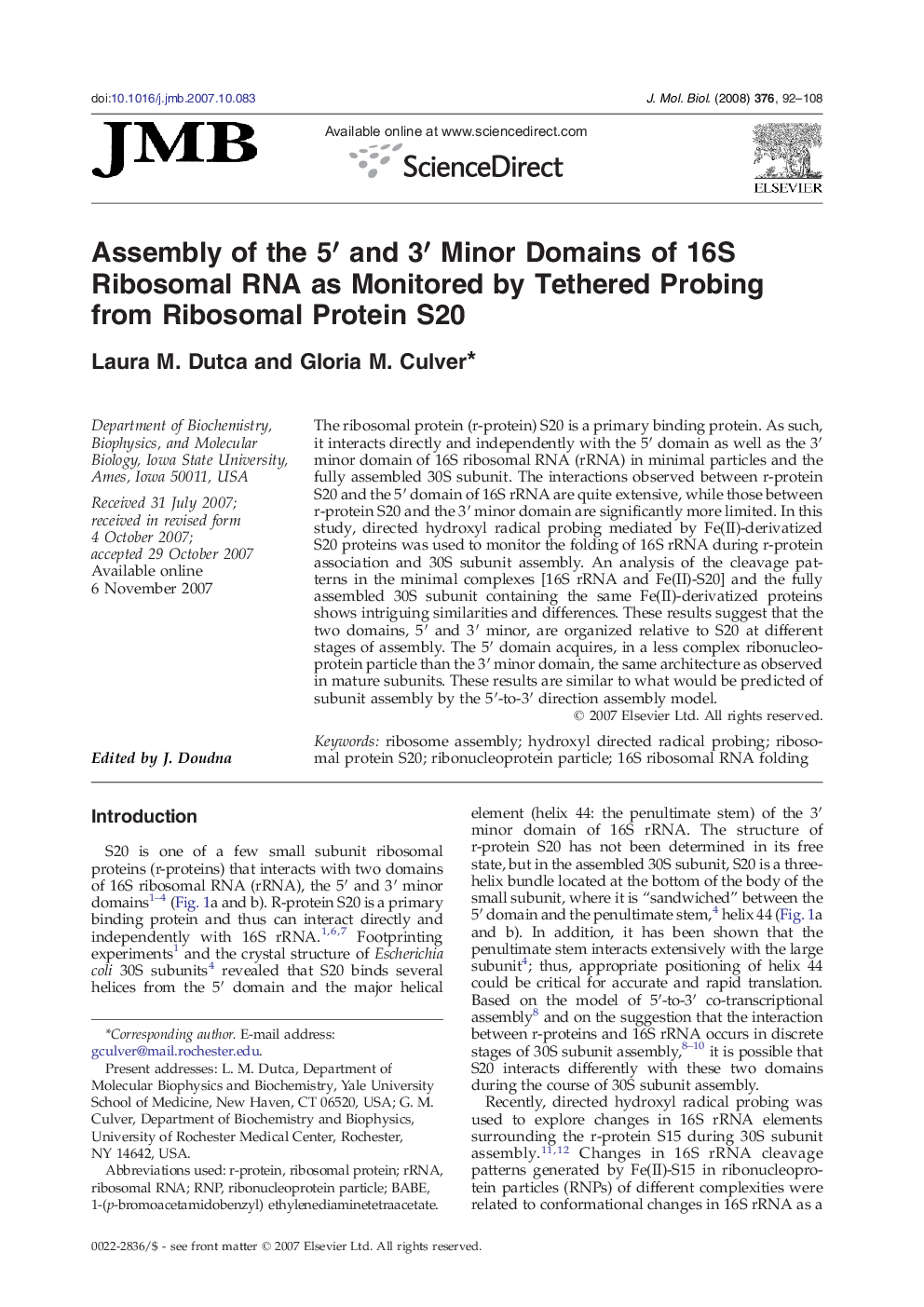| Article ID | Journal | Published Year | Pages | File Type |
|---|---|---|---|---|
| 2187632 | Journal of Molecular Biology | 2008 | 17 Pages |
The ribosomal protein (r-protein) S20 is a primary binding protein. As such, it interacts directly and independently with the 5′ domain as well as the 3′ minor domain of 16S ribosomal RNA (rRNA) in minimal particles and the fully assembled 30S subunit. The interactions observed between r-protein S20 and the 5′ domain of 16S rRNA are quite extensive, while those between r-protein S20 and the 3′ minor domain are significantly more limited. In this study, directed hydroxyl radical probing mediated by Fe(II)-derivatized S20 proteins was used to monitor the folding of 16S rRNA during r-protein association and 30S subunit assembly. An analysis of the cleavage patterns in the minimal complexes [16S rRNA and Fe(II)-S20] and the fully assembled 30S subunit containing the same Fe(II)-derivatized proteins shows intriguing similarities and differences. These results suggest that the two domains, 5′ and 3′ minor, are organized relative to S20 at different stages of assembly. The 5′ domain acquires, in a less complex ribonucleoprotein particle than the 3′ minor domain, the same architecture as observed in mature subunits. These results are similar to what would be predicted of subunit assembly by the 5′-to-3′ direction assembly model.
